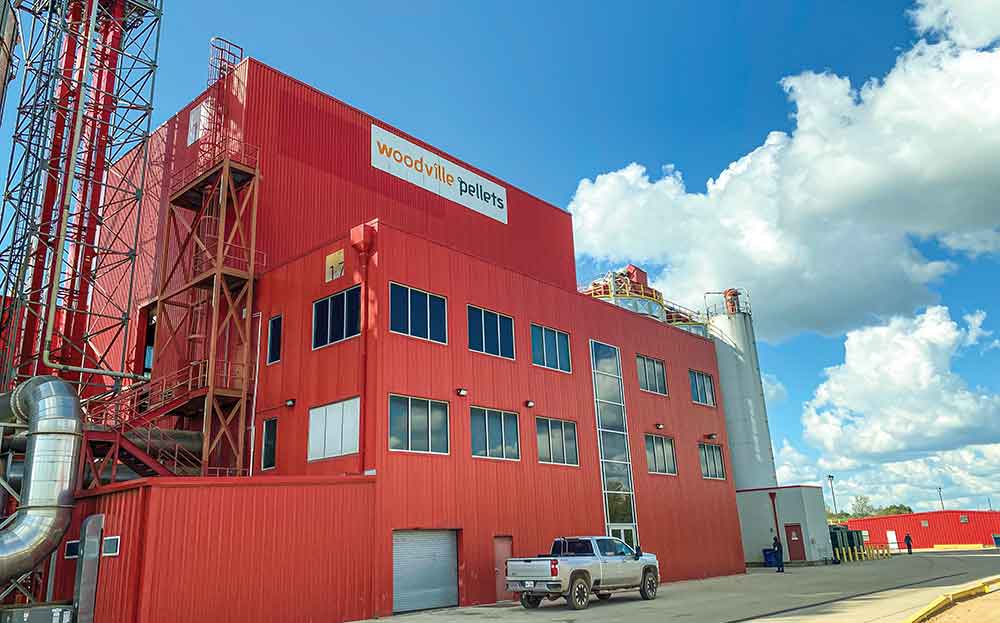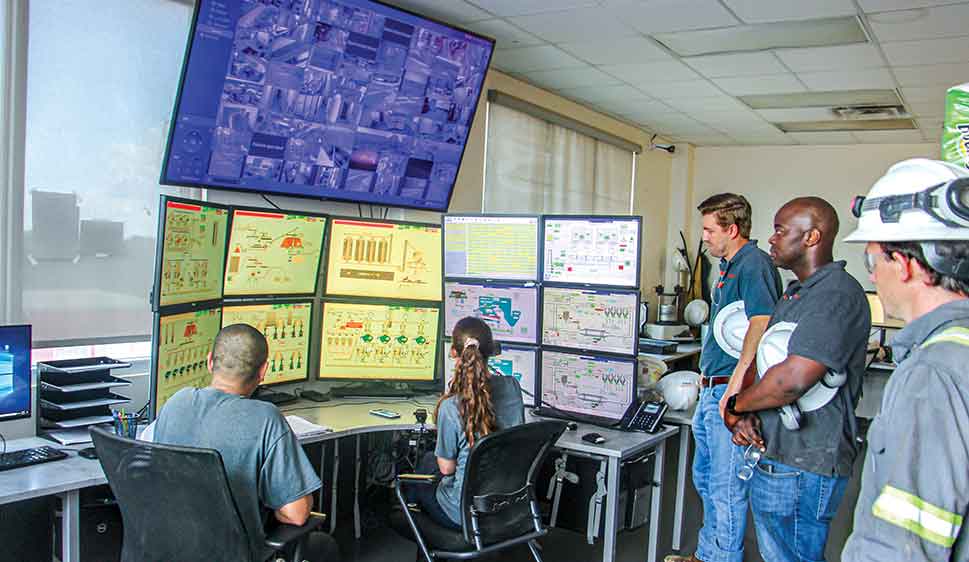Inside this issue
FROM THE EDITORS
IN THE NEWS
- Enviva Moves Forward With Expansion Plans
- Rayonier Expands Southern Timber Base
- Drax, Respira Partner On CDR Purchasing
- World Scientists Go To Bat For Bioenergy
- Bonds Allocated For Biofuels Project
- Bayou Fuels Project Promotes Carbon Savings
- Enviva Appoints Meth As CEO
- University of Georgia Researchers To Reengineer Poplar
- Auburn Team Looks At Needle Blight
- Center For Forest Business Starts Up
Determining The Best Path Forward For RTO Rebuilds Buys Back Uptime
The wood pellet manufacturing process is not kind to regenerative thermal oxidizers (RTO). The process air flow downstream of the dryers contains a significant amount of moisture, particulates and other contributing factors that make life difficult for the owners and operators of these required emissions control systems.
Article by Greg Thompson, key account manager in the Clean Technology Systems division of Dürr Systems, Inc.
Reconnecting, Refocusing: WPAC Conference Sheds Light On Pellet Industry’s Triumphs, Challenges
Canada’s wood pellet industry had a lot of ground to cover as they returned in person for the first time in years to discuss the state of bioenergy and its future potential. Around 200 industry insiders gathered for the Wood Pellet Association of Canada (WPAC) conference in Vancouver, September 20-21. Speakers from coast to coast assembled to tackle questions surrounding fiber supply security, local economic development, public perceptions, climate change mitigation, and plant safety.
Article by Maria Church
THE WOOD YARD
EDITOR’S NOTE: The following companies submitted editorial profiles to complement their advertisements placed in the Wood Bioenergy December 2022 issue.
- Airoflex
- CW Mill
- Evergreen Engineering
- FMW
- Fulghum Industries
- Metal Detectors, Inc.
- Rawlings Wood Hogs
- Vermeer
- West Salem Machinery
- Wolf Material Handling
Bioenergy Europe Pushes Wood Pellets
In 2021, the EU remained the global leader in wood pellet production—followed by the U.S. and Canada—reaching an output of almost 20 million tones, representing around 48% of the global production, according to a Policy Brief from Bioenergy Europe.
PRODUCT NEWS
- Morbark Announces New Dealers
- Bob Vermeer Guided Family Operation
- Ponsse NA Expands To Southern U.S.
Find Us On Social
From the Editors
Building Demand Boosting Utilization
The news that Strategic Biofuels in Louisiana is working with the Forest Service and other groups on biomass standards is big. Developing a Renewable Fuel Standard (RFS) system to make it easier to incorporate forestry feedstock into biomass and green energy initiatives and projects by ensuring raw materials meet sustainability standards is going to make utilization of woody biomass more attractive—and that’s good for the wood bioenergy industry.
Having such a system is yet another tool to aid in the increased utilization of wood as a sustainable energy source. Strategic Biofuels is taking the lead in developing an auditable system to track feedstock qualification, source-origin and chain of custody data to support its Louisiana Green Fuels project that will use woody biomass to produce renewable diesel and naphtha.
While the Louisiana facility is expected to break new ground with a negative carbon footprint and also incorporate well-based carbon sequestration technology, the use of woody biomass as a biofuel feedstock is an encouraging sign.
The EPA is required under the Clean Air Act to set RFS volume requirements each year. There are four renewable fuel standards—conventional renewable fuel, advanced biofuel, cellulosic biofuel, and biomass-based diesel.
Traditionally, biofuel has been the province of big agriculture: “Conventional renewable fuel” is mostly corn ethanol; “advanced biofuel” uses mostly non-food crop ag residues and industrial waste as feedstock; “cellulosic biofuel” uses mostly corn stover and similar products; and “biomass-based diesel” has seen soybean oil as its biggest feedstock.
From Left: Jessica Johnson, Managing Editor; Dan Shell, Senior Editor; Rich Donnell, Editor-in-Chief; David Abbott, Senior Associate Editor
Julie Tucker, National Wood Innovations Program Manager of Bioenergy, Biofuels, and Bioproducts, U.S. Forest Service, notes that “Historically, forest residuals have been a disposal challenge. The Renewable Fuel Standard helps change that by giving the renewable energy sector a financial incentive to convert these unwanted forest residuals to high value biofuels and renewable electricity.”
Tucker adds that EPA must ensure that forest residuals receiving credit under the RFS are qualifying feedstock: “We also want them to be sustainably sourced. This initiative with Strategic Biofuels is an exciting opportunity to do that.”
With large amounts of forest residue volumes available in timber-rich regions of the U.S., it’s important to see timber-based biomass standards set and met. This is especially true in areas where forest health issues and projects create large amounts of biomass available for utilization.
While the development group is being led by the Forest Service and Strategic Biofuels and the full team is still being assembled, members will include representatives from the National Assn. of State Foresters and the American Loggers Council as well as groups representing industrial and non-industrial landowners, tribal interests and others.
It’s critical to have a wide range of stakeholders involved, including wood bioenergy interests, to help develop such a system that has national implications for increased biomass utilization—and help ensure the wood bioenergy industry’s concerns are heard as biomass standards and tracking systems are established.
Graanul Invest Enters The U.S. Game With Woodville Pellets
Article by Jessica Johnson, Managing Editor, Wood Bioenergy
WOODVILLE, Texas – Plagued by never-ending drama—from financing to fire—the former Texas Pellets facility here and its nearby port facility never saw the consistency that many other industrial wood pellet operations in the pine-rich U.S. South have experienced over the last decade. Instead, it battled engineering issues, machinery issues, staffing concerns and then finally a bankruptcy. When Baltics-based Graanul Invest, one of the world’s largest and most reliable wood pellet producers, purchased the mothballed six-year-old plant at auction in 2019, to be blunt, the facility was a mess. But it had untapped potential. But first, some of the lingering legal messes had to be cleared by the administration. Then the familiar song of COVID-related delays killed some of the company’s timelines for re-start. But, as they say, the past is the past and the future, well, the future for Woodville Pellets, as the operation is now called, is bright.
The building stands tall, ready to hit its nameplate capacity of 500,000 tons annually.
And it starts with recent industry veteran hires Jason Ansley as Vice President of U.S. Operations and Earl Herndon as General Manager of both the Port of Port Arthur facility (which was included in the purchase) and the Woodville site. The pair, having worked together for another manufacturer, have an easy comradery and clear vision of what they want the facility to achieve. Both see what the plant can be and want to get there—while also recognizing the process will take some time.
Ansley and Herndon have pushed the staff to look deeper at data reported by the plant, which has helped everyone in identifying single points of failure and learn the plant’s quirks.
“The path we are on is going to be bumpy. There are things that will be up and down. We’re going to find something we didn’t expect,” Ansley says of the process to bring the facility to Graanul’s world-leading standards. But he’s quick to point out the team in place is going to help them get there together. Herndon echoes him by saying that with all transitions there are pain points, and turnover happens, but the knowledge base with the 78 employees, some of whom have been with the facility since commissioning, is unmatched. And the team will stay focused and reach its aspirations as long as everyone, including the two at the top, don’t get overwhelmed.
Want more content?
Wood Bioenergy is published and delivered 6 times per year tosubscribers worldwide. Readership includes corporate executives, mill ownership, mill management, logging contractors and equity venture interests. Wood Bioenergy is FREE to qualified readers.
Latest News
Optimize Wood Waste Management with Vecoplan’s Advanced Processing Solutions
Optimize Wood Waste Management with Vecoplan’s Advanced Processing SolutionsVecoplan provides industry-leading technology designed to address problems faced in the wood processing industry. Many wood processors have increasing challenges in managing scrap and waste...
USA Bioenergy, LP Sign Feedstock Letter Of Intent
USA Bioenergy, LP Sign Feedstock Letter Of IntentUSA BioEnergy (USABE) has signed a letter of intent with LP Building Solutions (LP) outlining plans to enter a long-term supply agreement for sustainably sourced wood fiber to support operations at USAB’s planned Texas...
Michigan Company Opens AI Powered Biomass Facility In Grand Rapids
Michigan Company Opens AI Powered Biomass Facility In Grand RapidsWoodchuck, an AI-powered climate tech company focused on transforming wood waste into renewable energy, officially opened its flagship biomass processing facility in Grand Rapids, Mich. in early May....
Andritz Acquires LDX Solutions
Andritz Acquires LDX Solutions Andritz has acquired LDX Solutions, a provider of emission reduction technologies and related services in the North American industrial market, with annual revenues of about $100 million. This acquisition further strengthens Andritz’s...
Beaver Lake Renewables Begins Front-End Engineering Design
Beaver Lake Renewables Begins Front-End Engineering DesignOfficials with SunGas Renewables recently announced the start of front-end engineering design (FEED), marking the beginning of the final stage of development for its flagship project, Beaver Lake Renewable...
Pellet Fuels Institute Leads DC Fly-In
Pellet Fuels Institute Leads DC Fly-In Pellet Fuels Institute (PFI) spearheaded a fly-in on April 9, visiting 29 Congressional offices to discuss the wood pellet industry and PFI’s policy and regulatory agenda. A dozen member representatives from across the wood...
Subscribe to Our Newsletter
Wood Bioenergy News Online hits the inboxes of subscribers in the wood-to-energy sectors.
Subscribe/Renew
Wood Bioenergy is published and delivered worldwide 6 times per year. Free to qualified readers in the U.S. Subscribers outside the U.S. are asked to pay a small fee.
Advertise
Complete the online form so we can direct you to the appropriate Sales Representative.




